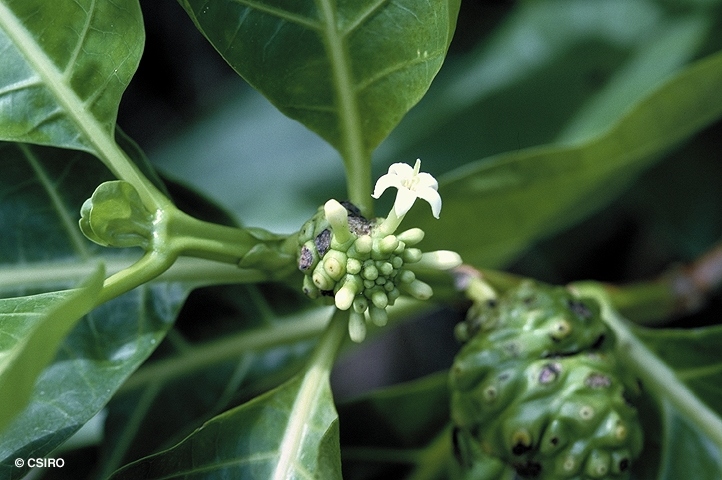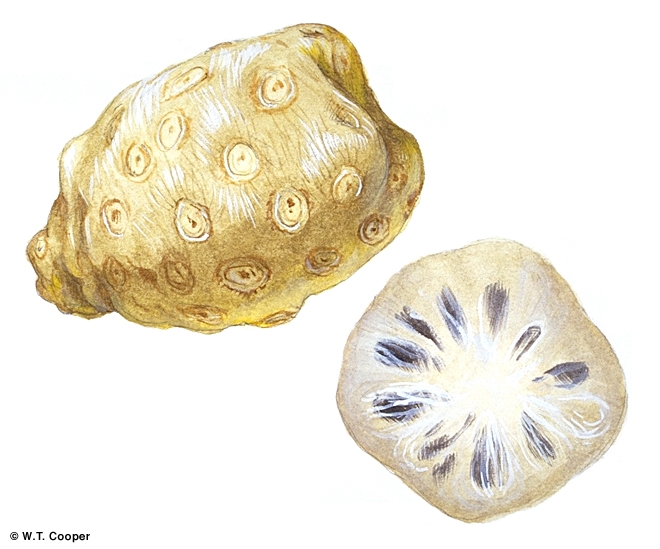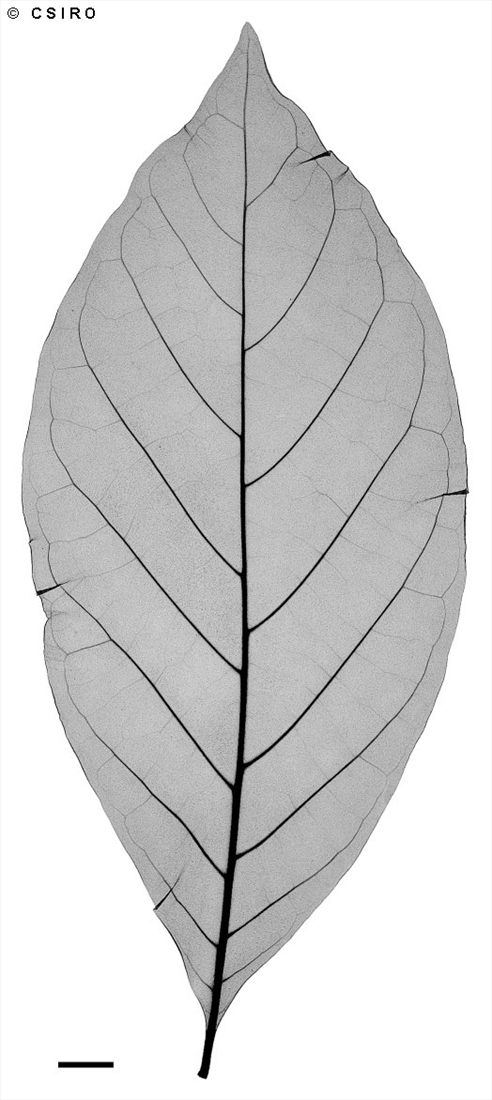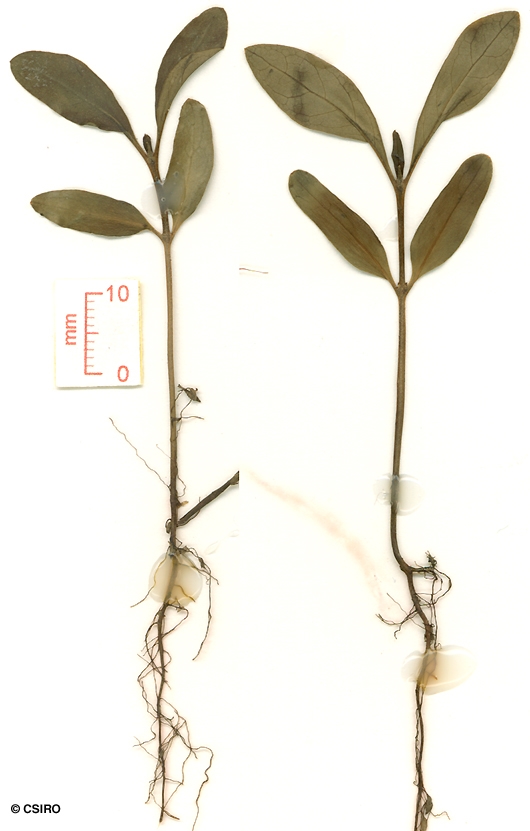Australian Tropical Rainforest Plants - Online edition
Morinda citrifolia L.





Linnaeus, C. von (1753) Species Plantarum 2: 176. Type: Habitat in India.
Seldom exceeding 30 cm dbh. Outer blaze orange-brown.
Calyx tube +/- smooth at the apex or the lobes virtually indistinguishable. Corolla tube almost as long as the corolla lobes, lobes about 3-7 mm long. Corolla tube densely hairy towards the apex on the inner surface. Stigma 2-lobed.
Ripe fruit has a strong odour like rotten blue vein cheese. Fruits about 4-7 x 3-4 cm, marked by the circular scars of the calyx tubes. Seeds numerous, rather variable in size and shape, but frequently about 6 mm long.
Cotyledons oblong or ovate, about 15-20 mm long. At the tenth leaf stage: leaf blade elliptic or elongate-elliptic, upper surface glabrous, undersurface with domatia (tufts of hair) along either side of the midrib; stipules interpetiolar, triangular, about 6 x 4 mm. Roots orange when fresh. Seed germination time 43 to 52 days.
An attractive small tree that is sometimes cultivated. The leaves are large and dark green. The flowers are small, white and perfumed. The fruits are reported as edible but the odour of ripe fruits preclude consumption.
This species may have medicinal properties.
This species has been used medicinally in India and the Pacific islands. The fruits are regarded as a contraceptive. Cribb (1981).
Morinda citrifolia var. typica Domin, Bibliotheca Botanica 89(4): 1178 (1928).





